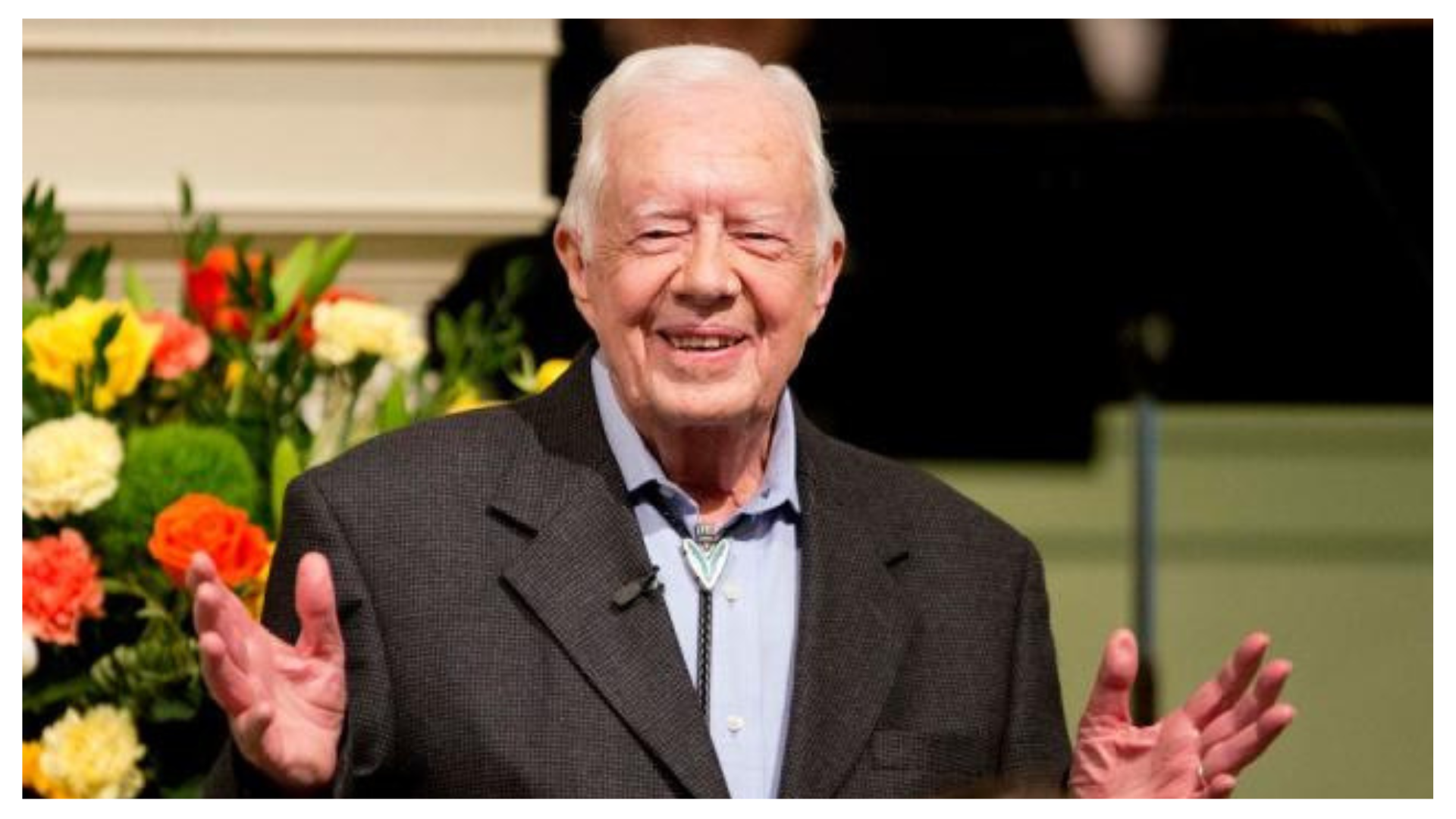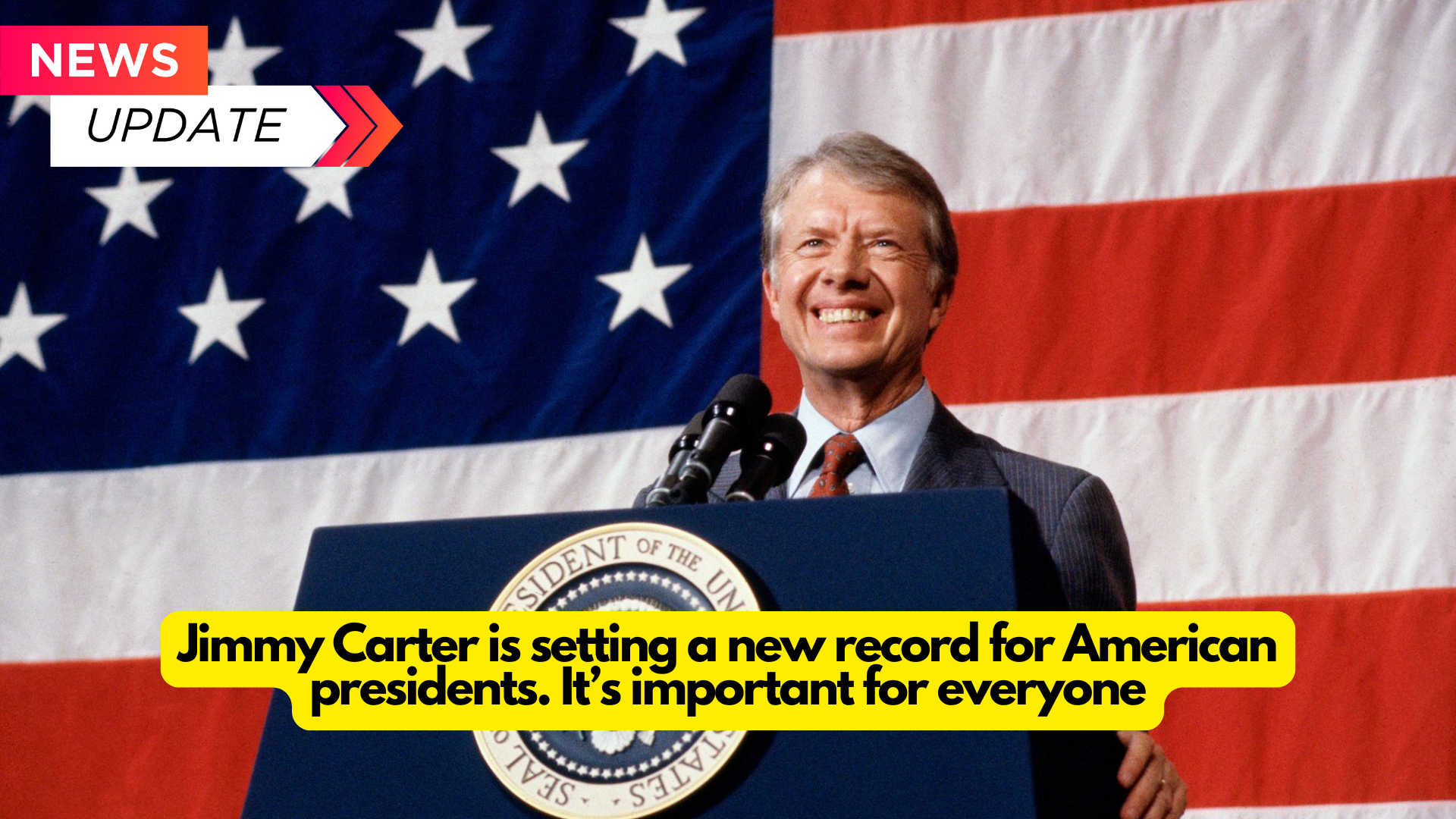Table of Contents
ToggleJimmy Carter achieves a new milestone on his birthday, October 1, when he becomes the first American president to reach triple digits.
It’s a milestone that will be reached by an increasing number of Americans in the coming years, and one for which the American social safety net is unprepared.
Carter’s post-presidency began in 1981, after losing his reelection effort and reaching the age of 56, which was too young for Social Security and Medicare.
A long, incredible retirement.
Carter did not spend his post-presidential life serving on corporate boards and earning lecture fees, as other recent presidents have.
Carter got his hands dirty constructing buildings, going on peace missions to Cuba and the Middle East, negotiating prisoner releases, living in his hometown, teaching Sunday school and college classes, writing books, and winning Grammy awards.
His has unquestionably been the longest, most righteous, and most fruitful post-presidency in history, with John Quincy Adams’ post-presidential anti-slavery work in Congress earning honorable consideration.
According to The Carter Center, in the nearly 44 years since he left office, Carter has practically eradicated Guinea worm, a parasite that affected over 3.5 million people in the mid-1980s and will infect only 14 in 2023.
It’s been 22 years since he received the Nobel Peace Prize in 2002, right as the United States was preparing for war in Iraq. Carter also made a historic visit to Cuba that year.

Carter disclosed at a press conference nine years ago that he had been diagnosed with brain cancer and would not survive much longer.
“I have had a wonderful life,” Carter declared, with the same unflinching honesty and painstaking precision that defined his administration. “I’m ready for anything, and I’m looking forward to a new adventure,” Carter stated during his 40-minute visit in front of the cameras, during which he regularly beamed his wide smile and never showed emotion. “It is in the hands of God, whom I worship.”
Carter had much to do.
Carter revealed in December 2015 that the cancer had been successfully treated. CNN’s research library maintains a chronology of his life, which includes several important items.
Carter published his autobiography, “A Full Life: Reflections at Ninety,” nine years ago. He earned his second Grammy for the audiobook. He won a third time a few years later.
He was hospitalized for dehydration in Winnipeg, Canada, seven years ago, while working outside for Habitat for Humanity, an organization with which he had a long affiliation.
It’s been five years since 2019, when he won his third Grammy, injured his hip, and quipped that there should be an age restriction on the president since he couldn’t handle it at 80. That year, he turned 95 and became the longest-living American president, surpassing George H.W. Bush.
Carter has been in hospice care for over two years, and his wife, Rosalynn, died nearly one year ago. They got married in 1946.
More people will turn 100.
As amazing as Carter’s years in the White House have been, it is becoming more common for people to live to the age of 100.
Former presidents, who are all well-off and benefit from hefty pensions, are hardly a typical sample of society, but it is worth noting that the four oldest former presidents—Carter, Bush, Gerald Ford, and Ronald Reagan—all lived in the twenty-first century.
The COVID-19 epidemic reduced overall life expectancy in the United States. According to KFF’s study, it has yet to return to pre-pandemic levels and trails behind other wealthy countries. As of 2022, the life expectancy in the United States was 74.8 for men and 80.2 for women.
However, the number of 100-year-olds is predicted to treble in the next decades, according to the Pew Research Center. It was predicted in January that the current number of centenarians was roughly 101,000 and that this figure will rise to around 422,000 within 30 years, representing a modest but rising proportion of the US population as the average age rises and the birth rate falls.
CNN’s Eva Rothenberg wrote a year ago about the challenges that many Americans will face later in life as they live longer, with more than half of older Americans likely to require long-term care in the future, which many will be unable to afford and is not covered by Medicare, the federal health insurance program that primarily benefits the elderly.

A significant topic during Carter’s administration and in 1980.
In 1977, Carter signed legislation that boosted Social Security levies and altered how payments were calculated for younger individuals, with the goal of improving the program’s finances. Later, in 1980, Carter signed new legislation to limit the expansion of disability benefits.
In the 1980 presidential election, which Carter eventually lost to Reagan, the long-term viability of Social Security and Medicare was a key campaign issue and a topic of controversy. And for good reason: notwithstanding the bill Carter signed in 1977, the long-term sustainability of social safety net programs remained a severe concern.
“There you go again,” Reagan stated dismissively to Carter during a presidential debate, claiming that he opposed the concept of Medicare. Reagan said he only opposed the version that became law. Carter subsequently accused Reagan of “gaslighting” voters over the subject.
“Governor Reagan has the right to change his mind.” “He has no right to rewrite history,” Carter stated in a statement days before Election Day that year.
More difficult reforms under Reagan
As president, after unsuccessfully proposing benefit cutbacks, Reagan appointed a group chaired by Alan Greenspan to recommend solutions, some of which became law in 1983, and not a minute too soon. The Congressional Research Service estimated that Social Security was months or weeks away from being able to provide full payments in 1983.

The 1983 Social Security changes included, for example, calculating certain Social Security benefits as taxable income and gradually raising the retirement age from 65 to 67.
How gradual? More than 40 years later, the rise continues. The 1983 revisions raised the full retirement age to 67 for anyone born in 1960 or after.
So those elderly still have a few years to go, although they can retire earlier for a lesser payment.
The 1983 statute, enacted during the beginning of Carter’s relatively early and protracted political retirement, was the last major structural modification to address Social Security’s solvency. There have been more regular modifications and big changes to Medicare.
The social safety net programs are once again on the verge of bankruptcy. The government claims that Social Security will be unable to provide full payments in just over a decade. Medicare has slightly more time.
Today, there are new proposals to gradually raise the retirement age or boost the Social Security levies, which only apply to the first $168,600 of income.
Changes to the safety net, like those made in the 1970s and 1980s, will necessitate a genuine debate among all sides of the problem.
Few individuals are currently debating this issue.
This year, neither presidential contender has discussed long-term funding for these initiatives. In reality, one of Donald Trump’s primary initiatives is to repeal the levy on Social Security payments enacted by Reagan and Congress in 1983. Vice President Kamala Harris has a vague idea to increase taxes on the affluent.



